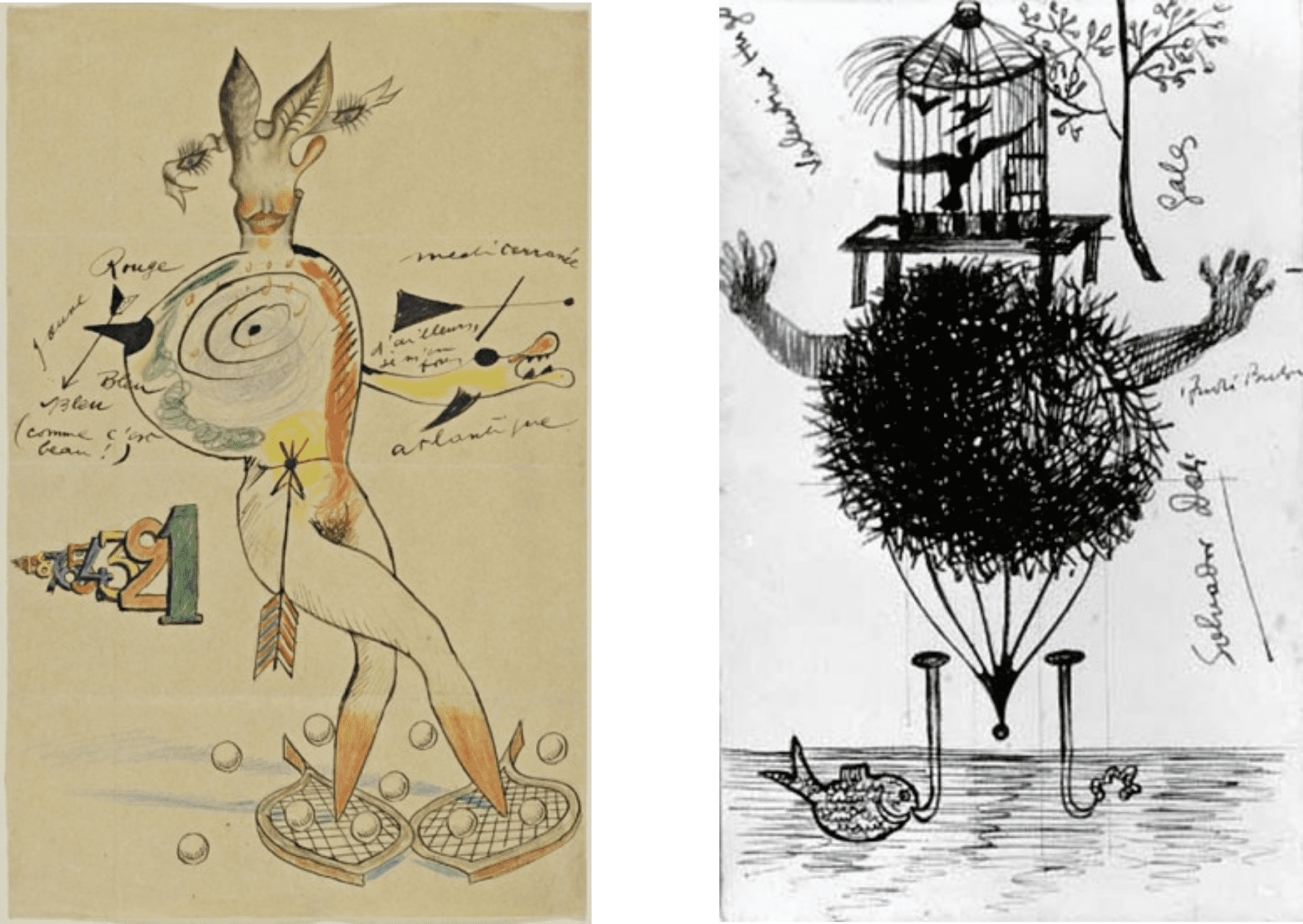If you’re looking for a different way to open up your retrospectives, your meetings or workshops of any kind, Exquis could be the perfect tool for a fun warm up or ice breaking session. Exquis is an online tool to create collaborative surrealist images.

The idea is based on the “exquisite corpse”, a game that was popular during the surrealist movement. In this game, the first player draws something in the top area of a blank paper and passes it over to the next player to continue drawing where it was left off. The drawing is folded in such a way that they can only see the bottom part of the previous drawing.
Man Ray and Dali, exquisite corpse lovers
The main figures of Surrealism were quite fond of this creative tool because it fit well with their values. Artists like Salvador Dalí, André Bretón, Max Ernst, Miró and Gala… played it often and we can find interesting graphic material that corroborates it:

This wasn’t just a drawing game. Some poets used it with words to generate poems. Lorca or Neruda called it “Poemas al Alimón”. In México, Nicanor Parra adapted it and entitled it “Quebrantahuesos”.
No matter the discipline in which the game was played, it always produced an interesting phenomenon: It helped unlock the power of imagination, reducing the intervention of the more rational aspects of the brain, forcing the players to channel the unconscious, which was one of the main ambitions of the surrealists.
Surreal and collaborative
It can be used for many different things: as a tool for unlocking creativity, as a dynamic facilitator or as a game to play with friends on a rainy day. It combines creativity, collaboration, surrealism and plain and simple playfulness.

This set of reasons led me to think, without doubt, that a digital open source version had to exist. That’s why Exquis was born!
It was created by part of the Kaleidos team: Ester Latorre (visual designer), Andrey Antukh (engineer) and Pablo Ruiz (CEO), during what we call the Personal Innovation Week. This event takes place twice a year to let the employees devote themselves to personal innovative projects and involves no restrictions as to what themes or technology apply. Only two basic rules are mandatory:
- You must use free or open source components for your project. Exquis used HTML, Canvas and Websockets for front and Python and Websockets for Back.
- By Friday 12.00am you must show a working prototype. Which we did!
The only rule: free drawing within one minute
To play Exquis all you need is a digital device on hand and someone to play with. They also need to have their own device as this game is played simultaneously.
There are two ways to start playing: you can either create a game and share it with friends or join one that already exists through a link.
Once you’ve entered, there is no going back. The timer will start ticking and you’ll have one minute to draw something… anything! But make sure that your drawing reaches the lower limits of the screen, because the next player will only be able to see this little section of your doodle. Guided by your traces, they will continue a drawing that now belongs to both of you. This sharing of the drawing will happen as many times as players participate in the game, and there will also be as many collaborative drawings as participants.
A creative option for your retros
Exquis is a wonderful tool for ideation sessions with clients, to lighten up dynamics (for example as warm-ups for retrospectives), for bringing people together on video calls during remote work… It helps all participants to focus on the same activity, while letting their creativity flow. It connects them briefly and puts them on a similar wavelength, where there is less rationalizing and more collaboration.
Join illustrious figures such as Salvador Dali, André Breton, or Lorca in this graphic adventure and share your art on Twitter or Instagram with the hashtag #exquis. We would love to see what your beautiful shared subconscious has to say—I mean, draw!
If you want more ideas about fun dynamics for generation of ideas, have a read of this article: A series of fun retrospectives, Taiga’s post written by Juan de la Cruz, designer at Kaleidos.
